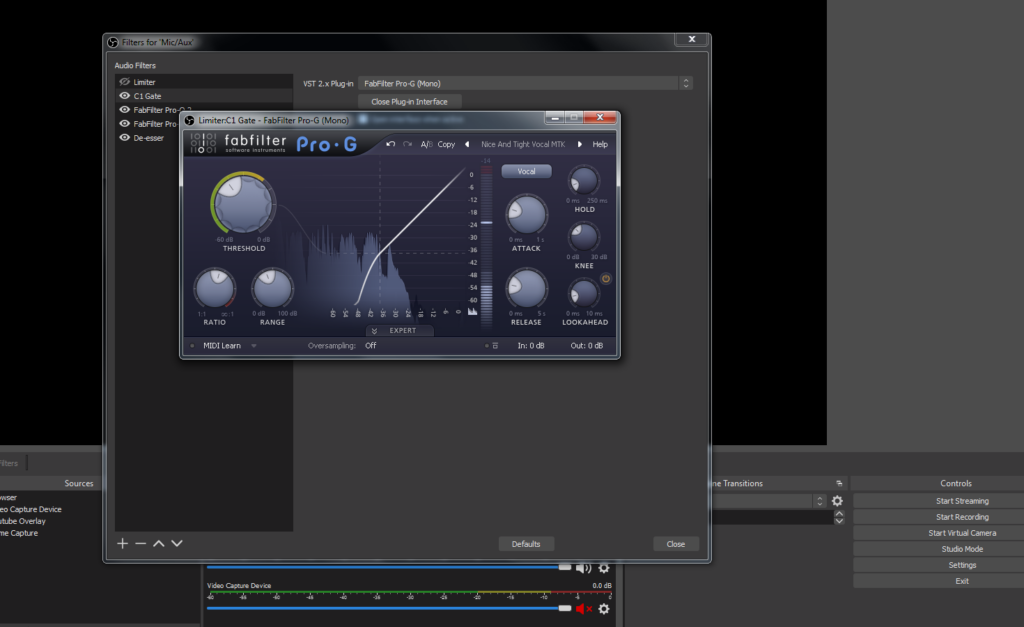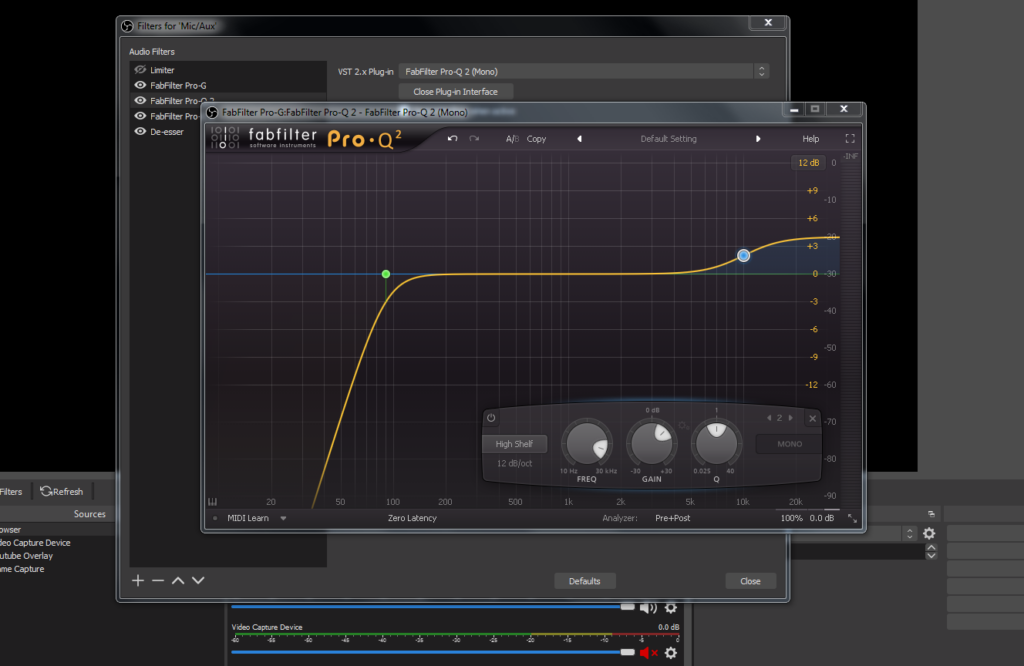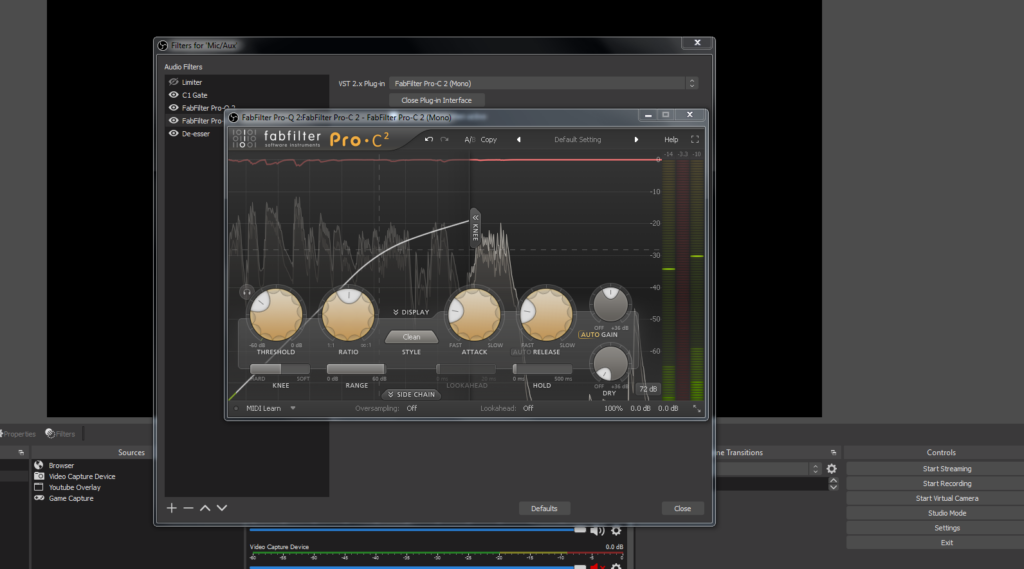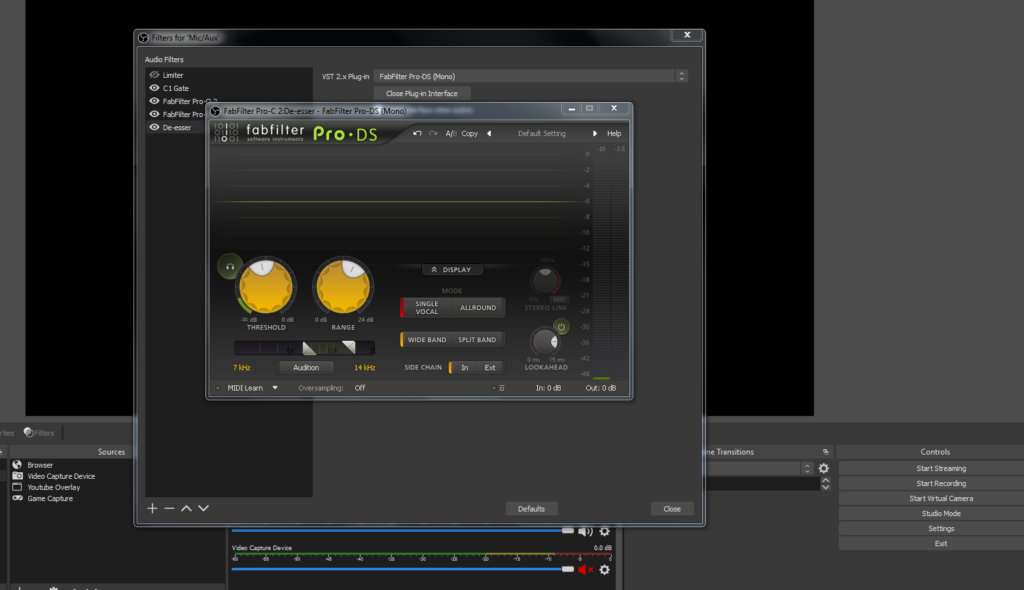
So, we really do believe Lirik has one of the best sounding streams out there. He really takes his sound seriously and he kind of has to as he mostly relies on his audio to interact with his viewers since he doesn’t use a webcam. But, solely relying on his audio to interact with viewers has worked tremendously well for him. With that being said, we’re going to go show you how to replicate Lirik’s sound since so many people have been wondering what his processing chain might look like. Lirik uses the Audio-Technica 2035, which is an incredible sounding mic and we’ve noticed that a lot of streamers are using it right now (Ninja and Summit both use this mic). It can be really great if you have the right room and your processing chain is setup correctly. Now, we’re going to move onto how to setup the processing chain for Lirik’s sound.
Setting Up The Lirik Noise Gate

The first thing we’re going to do is add a noise gate to our chain. We’re noticing that Lirik has a very quite room to begin with, but there is definitely some noise being filtered out. So we’re going to apply a very minimal noise gate and use mild settings. We don’t want to be aggressive at all here because Lirik has a very natural sound. We’re just removing the background noise when we are not talking. We’re doing this to try and remove that white noise like a computer fan, but the holy grail would be to filter out your mouse and keyboard noises if possible. However, it may be difficult to filter these things out without raising the threshold too high. So just play around with that threshold setting until you get something that sounds natural. We really want to keep that threshold very low.
The Lirik EQ Settings

The next thing we’re going to add is some EQ. We’re not hearing too much processing going on here but we do notice he has quite a bit of high end. So, in order to emulate that sound, we’re going to boost 3.5dB at 10000hz. We’re also going to use a high pass filter at 90hz. This will clean up our low end a bit and also make our mic sound slightly brighter.
Adding The Lirik Compression

Alright, now that the EQ is done we’re going to add some compression. Once again, Lirik has a very natural sound so we’re not trying to go crazy here. What we’re trying to do is just add a cherry to our ice cream sundae. We’re applying about 3dB of gain reduction with a ratio of 3:1. This is going to compress our audio levels so that when we have a gamer rage moment we don’t completely destroy our viewers ears. You could also tack on a limiter at the end of this chain just to make sure you don’t go over a certain dB level. We may cover that in another tutorial. For now, we are using these compressor settings.
A Little Extra “oomph”

The final step for the Lirik sound is to add a de-esser to our chain. This will tame the harshness in our voice and tame any sibilance that we might have introduced with the EQ. If you don’t own a de-esser, that’s fine too. This last step is completely optional as we did not introduce that much high end into our chain. However, if you are in the market for a de-esser we highly recommend FabFilter’s de-esser. It is one of my favorite de-essing plugins to use. If your audio happens to be too harsh, lower the 10000hz boost that we did by 2dB or so. With the de-esser we are taking out about 2dB of harshness. But, a lot of this is going to depend on your input gain on your audio interface.
Lirik’s Setup Complete
Alright, we did it! We’ve achieved the Lirik sound! With this mic and the processing that we did you should be sounding very close to Lirik. Feel free to play around with how close you position the mic to your face. We recommend place the mic about 6-12 inches away from your face for the best sound quality. The Audio-Technica 2035 is one of our favorite mics and it really is a magical piece of hardware. It sounds fantastic on the voice and it is no wonder why so many streamers are using this bad boy. So far, Ninja, Summit, and Lirik all use this mic and We’re sure there are many more streamers that we have yet to discover. We believe that this is a testament to how good this mic really is. We hope you learned something about Lirik’s sound! Thanks for hanging around! Cheers and have a lovely day! Buy Lirik’s mic here. And, check out our other news stories here. P.S. Lirik also uses an RME Babyface which you can buy right here. However, it’s really expensive and you can get a similar sound from cheaper audio interfaces like the Scarlet Solo. There really isn’t too much of an audible difference between the two, so we really recommend the Scarlet Solo as the value is difficult to beat.


